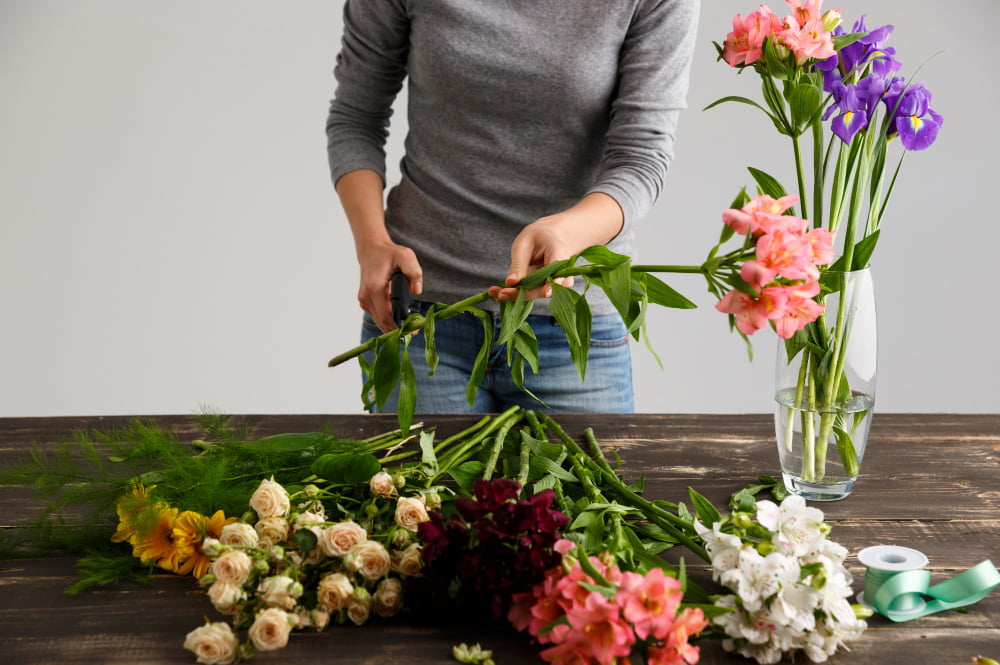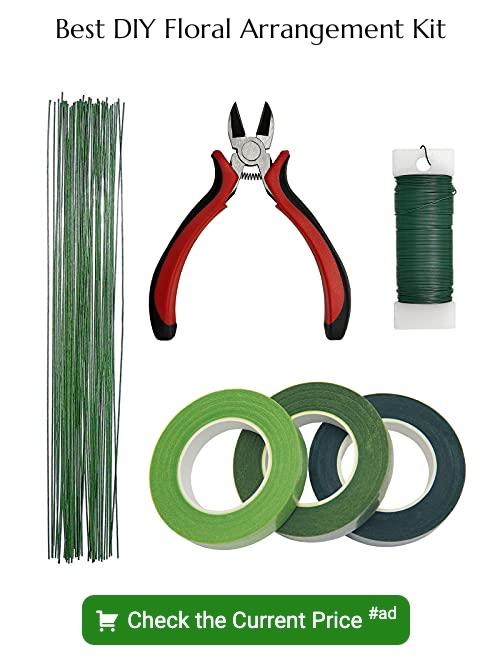Last updated on
Creating your floral arrangements is a delightful way to bring beauty to your home or event. Whether you’re looking to impress guests at a dinner party, add a pop of color to your home décor, or make a special occasion even more memorable, mastering the art of DIY floral arrangements can transform your space and reflect your style.
This comprehensive guide will walk you through the steps to craft stunning centerpieces using farm-fresh flowers, ensuring your creations look vibrant and last longer.
Choosing Your Flowers

The first step in creating a beautiful floral centerpiece is selecting the right flowers. Opting for farm-fresh flower delivery ensures you get high-quality blooms that will likely stay fresh and vibrant throughout your event. When choosing flowers, consider a mix of sizes, shapes, and colors that complement each other and match the theme of your decor. Popular centerpiece choices include roses for their classic elegance, lilies for a dramatic flair, and hydrangeas for their lush, entire appearance.
Preparing Your Materials
As a first step, collect all required materials first. To do this, you’ll need a clean vase or any other receptacle, floral foam (if your design requires it), a sharp pair of scissors or floral shears, and floral tape and wire optionally. The vase should be adequately cleaned to avoid contact with bacteria, which can harm the plants.
And if you use floral foam, put it in water for a few minutes until it is thoroughly wet. Through this, water will not only be provided but also help the survival and longevity of the flowers.
Constructing Your Base

Start with a sea of green, adding grass to your composition. It provides a holistic feel and helps define the character and shape of your centerpiece. Having a backdrop like tree ferns, eucalyptus, or ivy adds richness, facilitating the color of the flowers to stand out. Before you place them in your vase or styrofoam block, make a 45-degree cut at the end of your leaves to distribute them evenly throughout the arrangement.
Arranging the Flowers
Now, the best part is here—decorating the flowers! Start with the most enormous blooms to ensure they will hold the focus of the arrangement. Position them at varying heights and angles to give the painting perspective and life. Secondly, medium flowers must be placed in the center to fill in the empty space and give shape to the centerpiece. To fill up the rest of the area, add smaller flowers and buds with added textures and details.
Make sure to rotate your vase while working it to achieve a lovely arrangement from all sides. In this respect, the centerpiece must be placed in the middle of the table. It will be viewed from all sides, so you can not miss its design.
Adding the Final Touches
Once all your plants and flowers are arranged, it is beneficial to step back and view your creation from a distance. This broader perspective allows you to spot gaps or imbalances that may not be visible up close. If you notice sparse or disproportionate areas, feel free to add more blooms or greenery to achieve a more balanced and visually pleasing arrangement.
Additionally, to elevate the aesthetic of your centerpiece, consider incorporating some decorative elements that can complement the natural beauty of the flowers. For instance, adding a few ornamental branches or twigs can introduce an element of rustic charm.
Berries can offer a pop of color and texture, enhancing the visual interest of your arrangement. A carefully chosen ribbon, perhaps in a color that harmonizes with or contrasts the blooms, can be tied around the vase or woven through the flowers to add a refined touch.
These final details complete the look and personalize your floral centerpiece, making it uniquely yours. The added elements should enhance, not overpower, the natural beauty of the flowers, creating a harmonious and visually appealing display.
Care and Maintenance
It is imperative to remember that a long-lasting and lively DIY floral centerpiece will be provided with appropriate care if you want it to last. Keep your display away from direct sunlight or heat sources like radiators or ovens; this way, they will fade the flowers and stop them from wilting.
Add new water to the vase after two days to retain fresh flowers. The first factor is that you will achieve clear water without bacteria, which may result in cloudy water that can harm the stems and lack nutrients. This simple act of trimming the stem every time you change the water will stimulate the growth of the basil plant. Turn the cuts on angles to extend more surfaces which will facilitate water consumption, and this will make the flowers look brisk and beautiful throughout the day.
When you give the same degree of attention to your floral arrangement as the cafe, you will considerably prolong its life. Such carefulness has another advantage—it not only prolongs the beauty of your place for a longer time but also gives you the joy and satisfaction of seeing your handmade creation, which gets bigger and better daily.
However, remember that the overall quality and longevity of the bouquet depend mainly on these minor maintenance duties, which ensure that the flowers are as beautiful as they were when you were arranging them.
The Takeaway
DIY bouquets are a fun craft that adds to the aesthetic of your environment and is also a way of getting your creative juices flowing. By using farm-fresh flowers and a few basic skills and items, you can easily make amazing centerpieces that obey your own sense of style and aesthetics. Whether for a special event or just to add sparkle to your already fantastic decor, these floral masterpieces are guaranteed to bring beauty and grace into your life.
The main secret of DIY floral arrangements is testing and playing with various flowers and decorative elements. Diversity is the key. Try out different flowers and create unique arrangements until you find the right combination that fits your event and interior space. Undoubtedly, whenever you grow more competent and proficient at producing attractive centerpieces, it will be a highlight of your event.
Recap:




